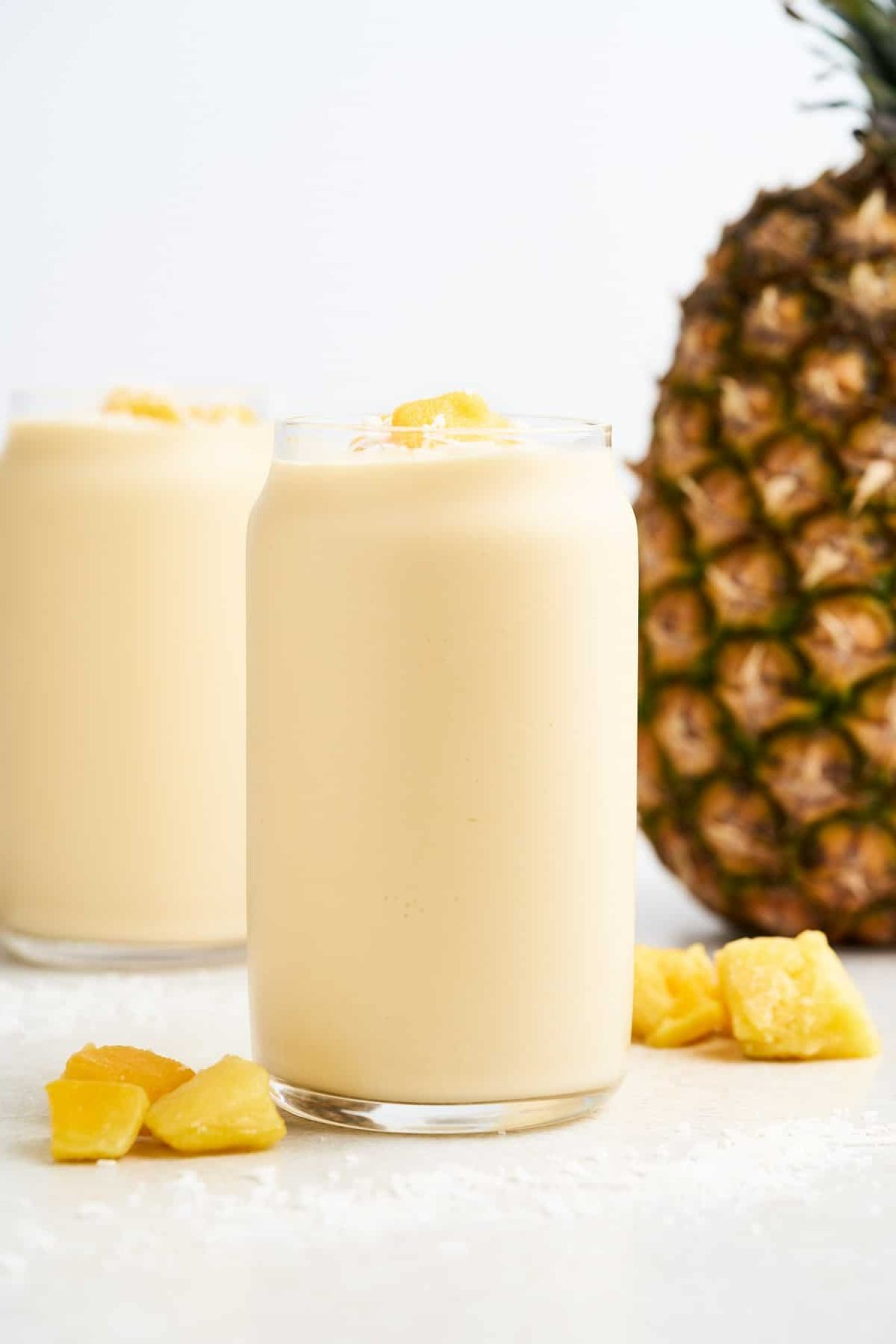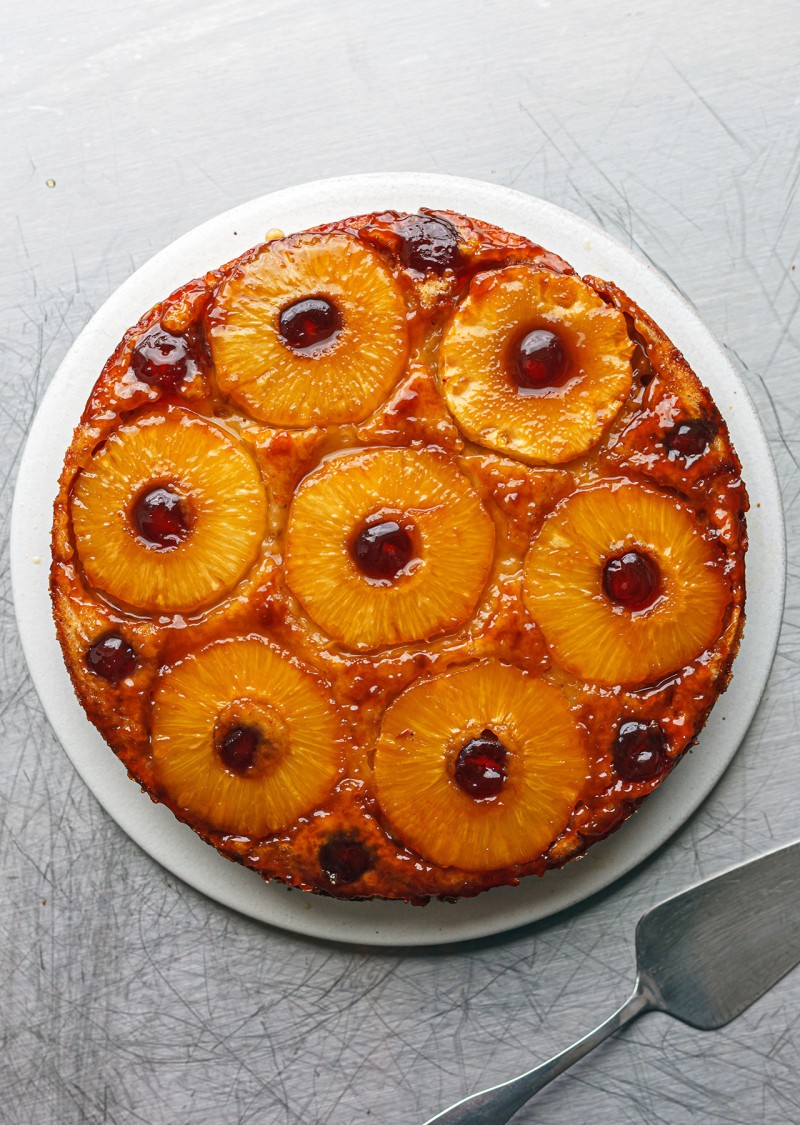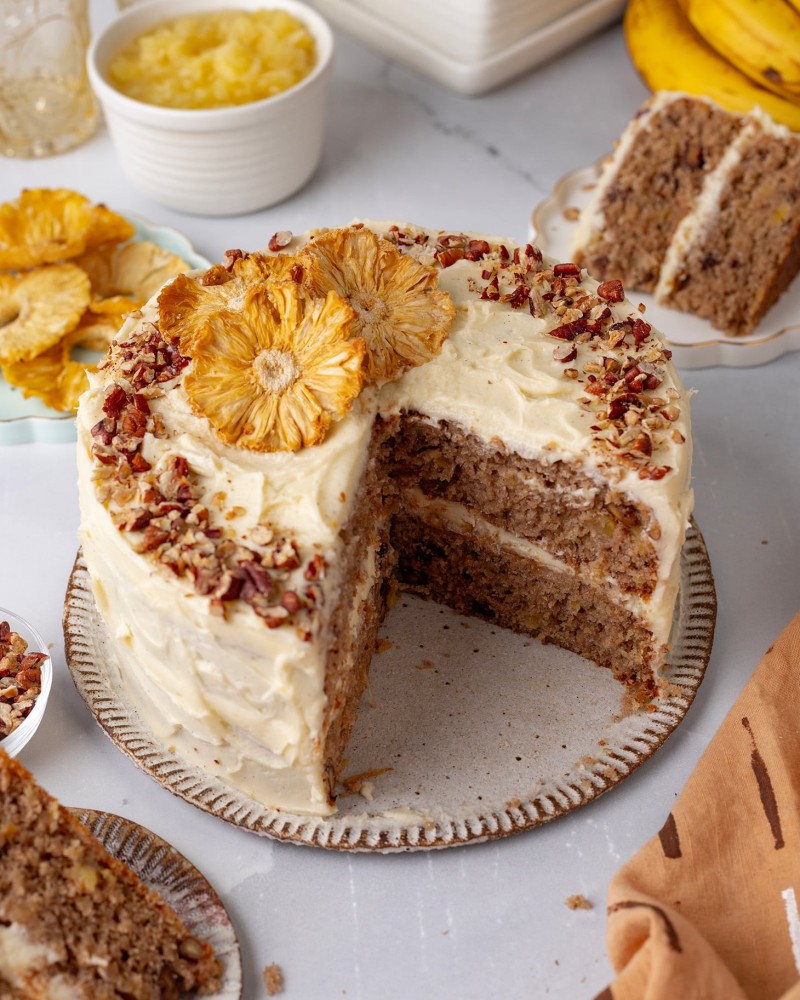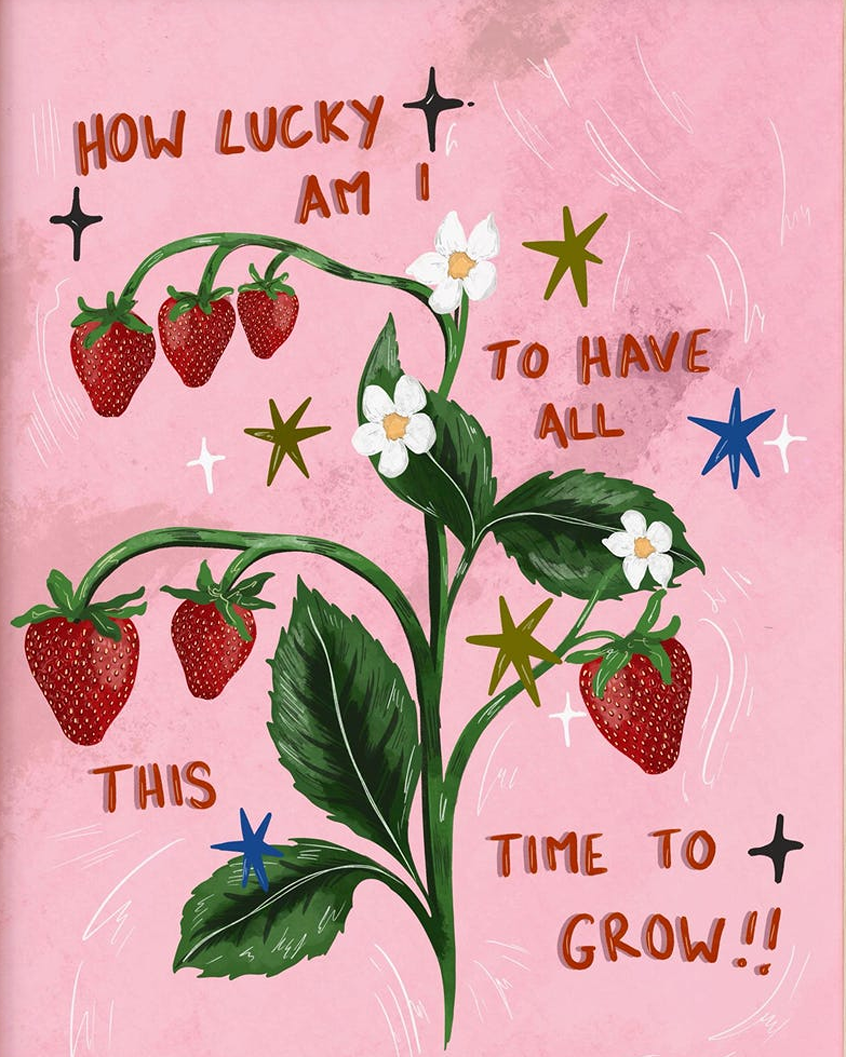Recipe Ideas to Use Up Leftover Pineapple

This pineapple & mango smoothie (Broke Bank Vegan) does not use local seasonal fruits, but is a great way to make use of tropical fruits on sale (or leftover pineapple chunks in tins), and can actually be subbed with strawberries, though there’s no photo (it will be pink instead!)
If you can’t bear the faff of chopping up a mango, use this simple glass trick to easily get to the flesh. You can sub mangoes with peaches, for a local seasonal variation.
If you invest in a good blender to make smoothies, UK law says the shop selling it, has to take back old appliances for recycling.
One comedian says the main brand of smoothies in supermarkets has a cheek to call themselves innocent! The prices charge for what is essentially blended fruit are astronomical.
And the company is now owned by a big American corporation. He says the cheapest way to make a banana smoothie, is simply to put a banana in your mouth – then swish your head around to blend it!
How to Chop a Fresh Pineapple
Use a sharp chef’s knife to slice off at least 1/2 inch on top and bottom. Then stand it upright and use the knife to slowly skim off the skin, using a paring knife to remove any ‘eyes’. Slice into rings, using a knife or cookie cutter to remove the core inside each ring.
Keep fruit pips & seeds away from animal friends. Read more on food safety for people & pets.
Homemade (Vegan) Pineapple Upside-Down Cakes

This recipe for vegan pineapple upside-down cake (Rainbow Nourishments) replicates a childhood favourite. Pineapple is obviously not local to England, but most people have cans of pineapple rings in the cupboard, and this is a great way to use them up. Or use fresh pineapple and plant milk combined.
Keep fruit pips & seeds (and citrus fruits) away from animal friends. Before baking, read up on food safety for people & pets.
To avoid the cake being too sweet, the recipe creator recommends canned pineapples in juice (not syrup) along with neutral oil and vegan butter (all Flora brands are free from palm oil). Made with plant milk, it ends with a crunchy caramel topping made with vegan butter and brown sugar.
Ensure the maraschino cherries are vegan (not coloured with carmine/cochineal from insects). Or sub instead with pitted cherries.
This is a classic wet and dry ingredient recipe, you just combine and bake the cake batter. Once prepared, serve with vegan vanilla ice-cream, and store leftovers in the fridge for a couple of days, in an airtight container.
Pineapple upside-down cake is actually an American invention – a ‘skillet cake’ that was created after the invention of canned pineapple rings. Back in the 1930s, newspaper articles wrote that ‘no woman can truly call herself a baker until she has made an upside-down cake!’
In fact, other fruits were used too like peach and apricot. So once you master this recipe, you could start experimenting to make it a ‘local seasonal’ upside-down cake!

This Pineapple Upside-Down Cake (So Vegan) is lemon-infused, serve warm with vegan vanilla ice-cream.
A Recipe for Tropical Vegan Hummingbird Cake

This recipe for vegan hummingbird cake (Rainbow Nourishments) is super-simple to make with affordable everyday ingredients, yet good enough for a picnic or party, and tastes of tropical paradise!
Keep fruit pips & seeds (and nuts) away from animal friends. Before baking, read up on food safety for people & pets.
Hummingbird cake is kind of like banana cake, but with the addition of pineapple and toasted pecans, along with brown sugar and warm cinnamon spices.
Try buying sea-freighted bananas from farm shops. This way you can still buy organic, without them being wrapped in plastic (like most organic bananas in supermarkets). If you have to buy in plastic, you can now recycle the packaging at supermarket bag bins.
The original hummingbird cake came from Jamaica in the late 1960s. There, it was known as “Doctor Bird Cake,” named for Jamaica’s national bird, the Red-billed Streamertail hummingbird.
The cake got its tropical flavour from ripe bananas and pineapple, both plentiful on the island. Early recipes didn’t call for eggs or dairy, but cooks often used whatever ingredients they had on hand.
The cake popped up in the United States in 1978 when Southern Living magazine published it. L.H. Wiggins sent the recipe in, and it became an instant hit across the South.
The classic version included eggs, oil, sugar, bananas, pineapple, pecans, and cream cheese frosting. This moist, rich dessert fit right in with the comfort food culture of the region.






